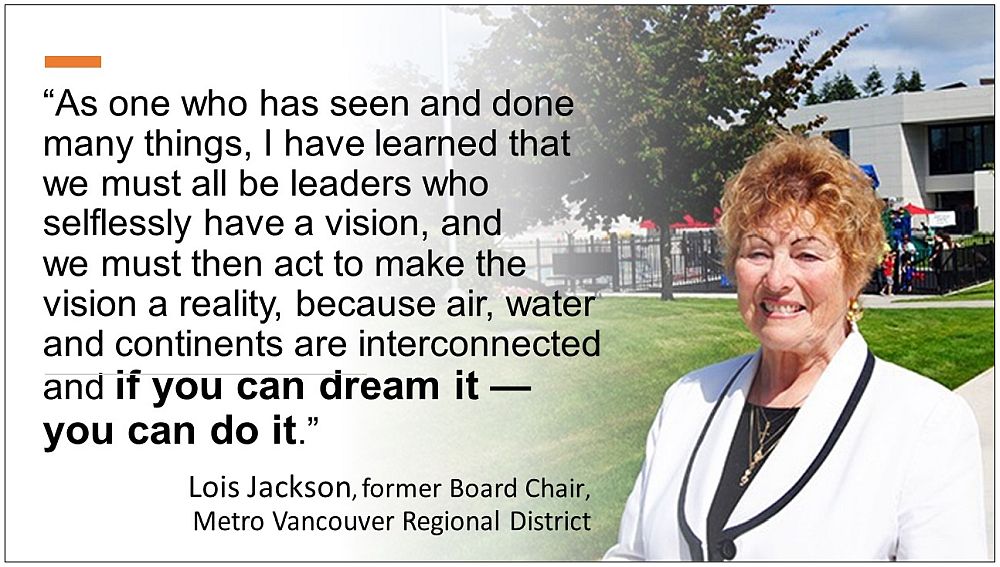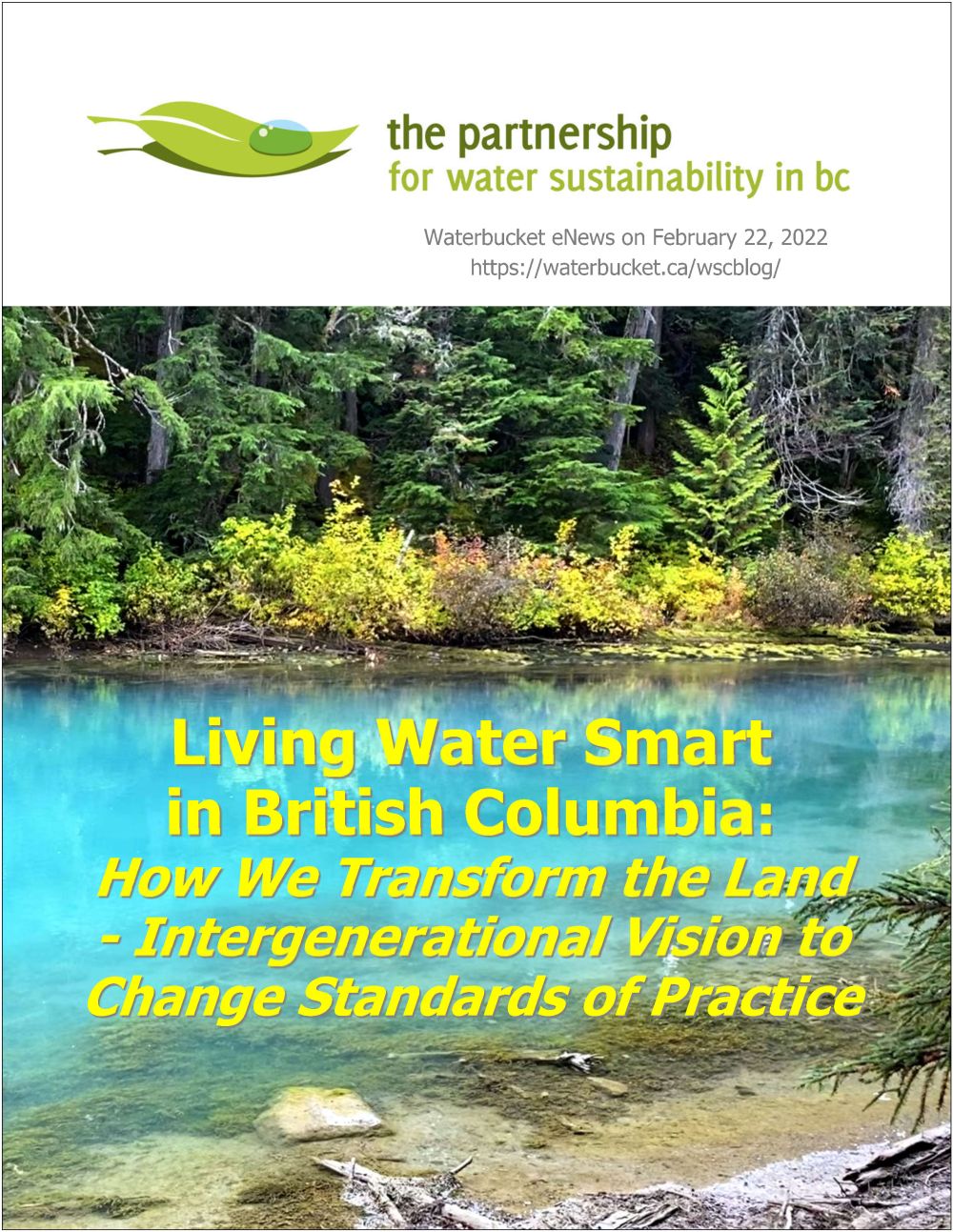HISTORY OF GREEN INFRASTRUCTURE INNOVATION IN BRITISH COLUMBIA: “At the 2005 consultation workshop, Greater Vancouver municipalities told us that they wanted to hear firsthand from those who are implementing green infrastructure, and they want to see what it looks like. In response to this need, 2006 was the first year of the Showcasing Innovation Series,” stated Paul Ham, Chair (2005-2008) Green Infrastructure Partnership
NOTE TO READER:
Published in February 2022 by the Partnership for Water Sustainability in British Columbia, How We Transform the Land – Intergenerational Vision to Change Standards of Practice connects a series of dots about British Columbia’s Green Infrastructure Partnership (GIP) and past interactions with Lois Jackson, former Board Chair of the Metro Vancouver Regional District. Interweaving the GIP storyline provides historical context, serving as a reminder of the importance of knowing one’s history.
Formed in 2003 and co-funded by the provincial and local governments and the Real Estate Foundation, the GIP provided provincial leadership and influenced the nature and direction of the green infrastructure conversation in this province. The GIP was one of six original elements of the Water Sustainability Action Plan when it was released in 2004.
The original 5-person GIP Leadership Team comprised Chuck Gale (Founding Chair), Kim Stephens (Action Plan Coordinator), Ray Fung, Dale Wall, and Deborah Curran. They represented four organizations plus the Action Plan. Within the first year, Paul Ham and Susan Rutherford replaced Chuck Gale and Deborah Curran, respectively. The four organizations shared a vision of making green infrastructure practices more prevalent in communities across BC.

Showcasing Green Infrastructure Innovation
“It was exactly a year ago that I met Paul Ham, Kim Stephens and Ray Fung of the Green Infrastructure Partnership,” recalled Mayor Lois Jackson in September 2007, when she spoke at the Showcasing Green Infrastructure Innovation event hosted by the City of Delta to kickoff off the second annual series.
“We talked about the success of the Showcasing Innovation Series as a pilot for the Convening for Action provincial initiative, and how it might help provide an on-the-ground focus for the Sustainable Region Initiative Task Force which I chair.”
“I remember that first meeting quite clearly. At first I was not sure I understood what was meant when they talked about ‘green infrastructure’ and ‘celebrating successes’. And then the light went on when I realized they were talking about things like Delta’s sidewalk retrofit strategy and our program for transforming ditches into landscaped amenities that beautify roadways.”

“I remember saying ‘now I get it!’ – the point being that when you have examples of what can be done, and projects are being built, you can then wrap your mind around the green infrastructure vision and say to yourself: ‘what’s the big deal, this is really common sense…. if we can do this, then we can do more.’ And before you know it, the ball is rolling, and the landscape is changing for the better. “
“Clearly, this program is resonating with local government. No other forum provides us with the same kind of opportunity to “tell our stories”. It is evident that there are many champions in local government; and it is important that we recognize and celebrate what they are doing. This is all part of creating our future.”
“And when we ask, what will this community look like in 50 years, we can point to the green infrastructure examples and then we will know what it will look like in 50 years.”

The storyline for the “How We Transform the Land” legacy document is structured in four parts
Part 1 is the essay by Lois Jackson. Her reflections on what she has observed and experienced over five decades are insightful. Her reflections explain why she was receptive to an overture from the Green Infrastructure Partnership in 2006 when she was in a position of leadership and authority as Chair, Metro Vancouver Regional Board.
Part 2 is the “story behind the story” of the players who were in the right place at the right time in 2003, seized the moment to form the Green Infrastructure Partnership, and developed the “Design with Nature” framework for integrating across infrastructure systems.

Part 3 describes building blocks in a collaborative and consultative process that secured high-level support from elected representatives for a “convening for action” vision to change the way that communities use and develop land by designing with nature.
Part 4 foreshadows how early successes in the Metro Vancouver region were replicated and then built upon by the CAVI-Convening for Action on Vancouver Island initiative, beginning in 2007. Under the banner of Living Water Smart, BC’s Water Plan, this work-in-progress continues to this day. It is a building blocks process.
To Learn More:
To read the complete story published on February 15th 2022, download a PDF copy of Living Water Smart in British Columbia: How We Transform the Land – Intergenerational Vision to Change Standards of Practice.

DOWNLOAD A PDF COPY: https://waterbucket.ca/wcp/wp-content/uploads/sites/6/2022/02/PWSBC_Living-Water-Smart_Design-With-Nature_2022.pdf

